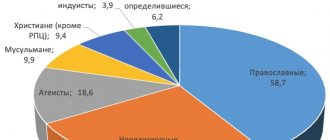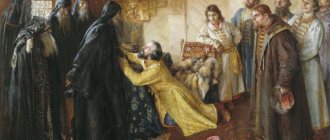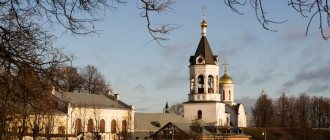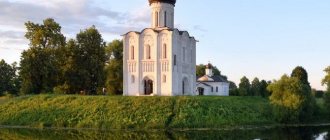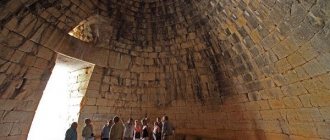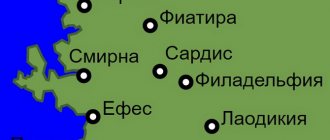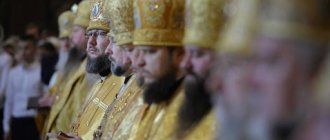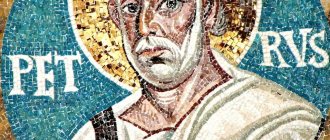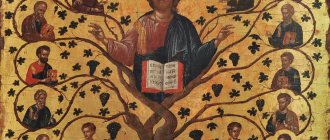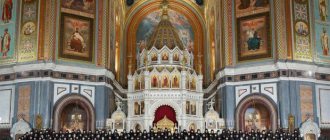Despite the fact that Russia is a secular state, the role of religion is difficult to overestimate. First of all, the Russian Orthodox Church, since most of the population associates itself with the Orthodox Church. Therefore, it is not surprising that Rosstat pays serious attention to such indicators as the number of churches in Russia, the religious composition of the population, etc.
At the same time, it should be noted that the work of the domestic statistical agency has its own distinct specifics. The first and main consequence of the secular nature of the state is the absence of the obligation for citizens to report in any form about their own religion. Therefore, most statistics on religious issues are generated through surveys.
Another way to obtain them is to analyze official information from other departments. For example, the number of temples and churches is calculated by taking into account religious organizations officially registered and operating in the country. A similar approach is used in relation to other religions, for example, the Armenian or Catholic Church.
Therefore, it is not surprising that the data of the Russian Orthodox Church and Rosstat often differ, and quite noticeably.
Religious composition
For the reasons described above, there is simply no current Rosstat data on the religious composition of the population at the beginning of 2022. The last serious survey on this topic took place in 2012. It gave the following results.
| Orthodox | 41,00% |
| Non-religious believers | 25,00% |
| Atheists | 13,00% |
| Muslims | 4,70% |
| Christians | 4,10% |
| Sunni Muslims | 1,70% |
| Orthodox outside a specific church | 1,50% |
| Pagans | 1,20% |
| Buddhists | 0,50% |
| Old Believers | 0,50% |
| Shia Muslims | 0,50% |
| Catholics | 0,50% |
| Judaists | 0,50% |
| Hindus | 0,50% |
| Pentecostals | 0,50% |
| Others and undecided | 4,30% |
| TOTAL | 100,00% |
In a more visual chart format, the data looks like this. For ease of perception, different movements of Islam are combined into one, and religions with a share of less than 1.5% are collected in one group.
The surveys that were conducted later were not so large-scale. But their data allows us to assert that the religious composition of the Russian population has not undergone major changes over the next 9 years. In general, the situation at the turn of 2020-2021 remains approximately the same.
Dynamics
As for the dynamics, it is worth considering not only how many churches and other types operate on the territory of the country, but also how many Orthodox, Muslims and other groups of believers exist in certain communities today. Moreover, this indicator is interesting to consider from the point of view of the time scale.
After all, if Muslims, even during the times of the Soviet Union, were considered traditional believers, then Christians, in the vast majority of cases, were excommunicated from the church for the period of time during which the USSR existed.
Therefore, for 2022, the situation with dynamics is as follows - if in 1987 about 9% of the population listed themselves as religious, then by 2007 this number exceeded the mark of 60% of citizens of the total population of the country.
This sharp increase is due to the fact that faith was not persecuted in the Russian Federation (unlike the USSR) and various religious movements formed here. The only thing you need to pay attention to is the ban on the activities of extremist organizations, which often identify themselves with one faith or another.
Number of churches and temples in Russia
As noted above, the data of Rosstat and the Russian Orthodox Church do not coincide on this issue. The following is information from the official statistical office, which has been published annually for the past several years and is based on the number of registered religious organizations.
On years
First, it makes sense to look at the statistics by year. According to Rosstat data, it looks like this:
| Year | Number of religious organizations |
| 2010 | 12 941 |
| 2011 | 13 265 |
| 2012 | 13 943 |
| 2013 | 14 522 |
| 2014 | 15 196 |
| 2015 | 16 076 |
| 2016 | 16 687 |
| 2017 | 17 687 |
| 2018 | 18 191 |
| 2019 | 18 550 |
Even a cursory analysis shows positive dynamics of the parameter in question. Annual growth varies from 2% to 6%, but is present throughout the entire time period.
It makes sense to cite the data of the Russian Orthodox Church posted on the official website of the Moscow Patriarchate. In accordance with them, the number of churches and premises for worship was 29.3 thousand in 2009, and 38.6 thousand in 2022. Thus, the growth over 10 years was more than 31%, which is slightly lower than according to Rosstat (almost 44% for the same period). It is necessary to take into account that the statistical agency collects information exclusively for Russia, and the Russian Orthodox Church - all over the world, including Ukraine and Belarus, where the number of Orthodox churches and prayer rooms is especially large.
By region
The regional distribution of temples and churches is very uneven. This is not surprising, since in the territory of certain constituent entities of the Russian Federation, for example, national republics - Tatarstan, Bashkiria, Chechnya and others - the predominant religion is Islam. This is clearly shown in the following image.
How many churches are being built from scratch?
As I already indicated above, 99% of the churches opened since 1989 are buildings transferred by the state back to the jurisdiction of the Russian Orthodox Church, which have undergone the procedure of repair and restoration.
Very few new churches are being built. For example, let’s take Moscow, out of 507 churches where services are held, only 61 are new, built over the last 8 years (12%).
That is, the “giant” construction of churches means 8 churches a year in Moscow? Somehow it doesn’t go well with “3 churches a day”, doesn’t it?
https://tass.ru/moskva/6135859
“Over the past eight years, 85 temple complexes have already been built in the city, 61 of them have been put into operation, of which 11 are only in 2018, and another 12 are being prepared for commissioning. We have set a goal for ourselves - to commission at least 10 churches a year and start 10. In addition, 140 temporary wooden chapels have been installed,” he said.
According to Resin, construction is carried out exclusively through donations from city residents, without affecting the city budget.
How did the number of churches decrease?
During the 20th century, the state's attitude towards religion in general and the Russian Orthodox Church in particular changed repeatedly. Orthodoxy was one of the pillars of the Russian Empire, therefore, at the end of 2016, there were 55,173 churches and more than 25 thousand chapels operating in the country.
Their numbers declined rapidly over the next few years. At the beginning of 1941, the number of Orthodox churches was 4,225.
After the start of the Great Patriotic War, the number of churches and houses of worship increased slightly again. According to some estimates, at the end of 1945 it was approximately 20 thousand.
After the end of the war, negative dynamics emerged again. By 1961, the number of churches and houses of worship of the Russian Orthodox Church was 11,572. By 1988, the number of parishes had decreased to 6,893.
The collapse of the Soviet Union again radically changed state policy towards religion. The result was a sharp increase in the number of parishes. At the end of 1994, their number was 15,985, in 2004 - 26,590, in 2011 - 30,675, at the beginning of 2022 - 38,649 churches and other places of worship.
It is necessary to understand that all the above figures apply not only to Russia, but to all territories where the Russian Orthodox Church operates. This approach allows for correct comparisons of the dynamics of the number of churches. Moreover, the borders of Russia and the Soviet Union have changed several times, and therefore statistics for one state will simply be greatly distorted. Below is a graph of changes in the number of churches and houses of worship of the Russian Orthodox Church.
It is important to note that even today the number of Russian Orthodox Church churches is inferior to pre-revolutionary figures. Even if the current positive dynamics are maintained, it will probably not be possible to reach the levels of 1916 in the next few years.
Where do they train to become priests?
To become a priest, you need to receive a higher specialized education. It is given by an Orthodox university, theological seminary or academy. The most prestigious of them are the Russian Orthodox University, the Theological Seminary in Moscow, the capital's Trinity-Sergius Academy, and the Theological Academy in the Northern capital. The full course of study is five years.
When entering the seminary, you must successfully pass an exam on the Law of God. The main subjects are pastoral pedagogy, church history, theology, history of the Russian church, Old Testament, New Testament, biblical studies, sect studies. To equate the diploma received to a bachelor's degree, foreign and Russian languages and literature have been added to the program. The main emphasis, in addition to specialized subjects, is on the study of psychology.
To become a clergyman, you must meet the following requirements:
- have a document confirming graduation from a theological school, and then from a seminary or academy;
- obtain a recommendation from a current priest;
- to be a parishioner;
- reach the age of 30;
- marry only once.
To build a successful career in the religious field, it is important to successfully transfer from an educational institution, to be flexible and communicative in relations with those in power, and to go through all the steps of the hierarchical ladder.
Cost of construction of the temple and sources of financing
In the vast majority of cases, the construction of temples is financed by private sponsors. Many of them are directly connected with regional or federal authorities, but funds are allocated directly from the budget very rarely.
The approximate cost of building a church for five thousand parishioners today is about 250-300 million rubles. If the number of parishioners is halved, the amount of necessary expenses is reduced by approximately three times - to 80-90 million rubles.
In 2022, the number of religious organizations increased by 359. Based on the premise that a third of newly built churches are designed for 500, and two thirds for 250 parishioners, the amount of investment is 57.440 billion rubles per year. If we consider that we are talking specifically about private investments, the figures should be considered quite impressive.
Funding for church construction from the budget is carried out on a noticeably smaller scale. Thus, during 2016-2019, about 4.5 billion rubles were sent through the FADN to the Russian Orthodox Church.
We should not forget that the Russian Orthodox Church is capable of independently financing many of its projects. There is no exact data on how much the church earns, but in any case we are talking about many billions of rubles.
What was in the Patriarch’s speech itself?
Word from His Holiness Patriarch Kirill after the Liturgy in the Church of All Saints in Strasbourg
Please note that for the first time Kirill speaks a little differently: “Today I would like to say that we open on average three churches a day - I’m not mistaken, three churches in 24 hours .” and only then in a “beautifully constructed phrase” about the construction of temples. That is, we are not talking about full-fledged construction from scratch, but about “opening,” which very often only means restoring the work of a temple dilapidated by time after repair and restoration work. Let’s find out if this is true by raising specific numbers.
There was not a word about the last 10 years in the speech.
Two years ago (June 21, 2022) I published an article: One of the targets of the West’s attack on Russia is the Orthodox Church. Since then the situation has only gotten worse. There I also wrote:
But again: the media orders are fulfilled only for the Orthodox Church.
Dynamics of growth rates in comparison with other areas
The above data acquires especially noticeable relevance if we compare the dynamics of changes in the number of churches with other no less socially significant objects. In this case, we are talking about institutions in two key areas of life – healthcare and education. Statistics on the number of churches, kindergartens, schools and hospitals in the context of 2010-2019 are given in the table.
| Number of objects in thousands | 2010 | 2011 | 2012 | 2013 | 2014 | 2015 | 2016 | 2017 | 2018 | 2019 | Dynamics over 10 years |
| Churches of the Russian Orthodox Church | 12,9 | 13,3 | 13,9 | 14,5 | 15,2 | 16,1 | 16,7 | 17,7 | 18,2 | 18,6 | 144% |
| Kindergartens | 45,1 | 44,9 | 44,3 | 43,2 | 51 | 50,1 | 49,4 | 48,6 | 47,8 | 47,1 | 104% |
| Schools | 50,8 | 47,7 | 46,2 | 44,7 | 44,8 | 43,4 | 42,6 | 42 | 41,3 | 81% | |
| Hospitals | 6,3 | 6,2 | 6,2 | 5,9 | 5,6 | 5,4 | 5,4 | 5,3 | 5,3 | 5,2 | 83% |
Particular attention should be paid to the last column. It shows that the number of churches has increased by 44% in 10 years. Another parameter – the number of kindergartens – also has positive dynamics. But in this case, the growth was only 4%, with a decline observed in the last 5 years. The other two indicators under consideration – the number of schools and hospitals – show negative dynamics.
Moreover, the decline over 10 years was almost 20% for each parameter.
Forecasts for the future
The current policy of the Russian state is focused on supporting the Orthodox religion. This is confirmed by Rosstat data. Therefore, most experts believe that the number of Russian Orthodox Church churches will increase, at least in the next few years. How long the positive dynamics will continue will depend on the economic situation in the country and the world. The year 2022 and the coronavirus pandemic have clearly demonstrated how important factors are that are simply impossible to predict in advance.
Number of organizations
The number of religious organizations of different faiths officially registered in the Russian Federation at the end of 2022, beginning of 2020 is as follows:
- Russian Orthodox Church – total 18,550.
- Old Believers - 387.
- Roman Catholics - 237.
- Greek Catholics – 8.
- Armenian Apostolic churches – 106.
- Islamic – 5954.
- Organizations that profess Buddhism - 269.
- Professing Judaism – 268.
- Christian Baptists - 889.
- Evangelists – 878.
- Lutheran – 222.
- New Apostolic Church – 46 organizations.
- Presbyterian Church - 194.
- A small number of Hindu, Sikh organizations, the Assyrian Church of Shamanism, Karaites, Molokans, the Church of the Last Testament, the Church of Christ and other organizations, numbering from a few to several dozen, but not more than a hundred.
On years
If you evaluate the number of churches, temples and other religious organizations and associations in the country and how they changed in their numerical composition, you should indicate the following data:
- The Russian Orthodox Church in 2010 had 12,941 registered organizations. And at the end of 2022, their number already totaled 18,550 units.
- Judging by the number of mosques, it can be noted that in the 1980s there were less than 100 such religious institutions in the USSR. And already in 2015 their number already exceeded 7,000 units. Thus, it is worth noting that over the past 30 years their number has increased more than 70 times (this statement was made by the Council of Muftis of Russia).
By region
Naturally, the situation in Russia looks heterogeneous, since there are regions (the overwhelming majority are the Caucasian republics) that traditionally profess Islam, while the central and other regions of Russia are predominantly Christian.
Answers to readers' questions
Why are the data from Rosstat and the Russian Orthodox Church different?
This is explained by different approaches to organizing accounting. Rosstat counts the number of religious organizations registered and officially operating in the country. The Russian Orthodox Church focuses on the number of objects included in the structure of the Orthodox Church - parishes, churches, monasteries, etc.
Each approach has its own characteristics and, as a result, advantages and disadvantages. Therefore, it is most correct to consider the data obtained with their help in a complex manner.
How many churches are active in Russia in 2022 and 2022?
There are no exact data for the past and present year yet. But it can be unequivocally stated that if the current positive dynamics are maintained (growth by 2-3% per year), the number of religious organizations will reach and exceed the figure of 19 thousand, and it is quite possible that this has already happened.
Why is the number of churches and houses of worship increasing, while schools, kindergartens and hospitals are decreasing?
The reason for this development of the situation lies in state policy. On the one hand, the Russian Orthodox Church occupies such a position in society that it is able to dictate terms on many issues. These include obtaining funding from private business structures of the highest level.
On the other hand, in recent years there has clearly been a tendency towards optimizing the social systems of the state and, above all, education and medicine. The logical consequence of this was a gradual reduction in the number of schools, kindergartens and hospitals.
What Orthodox churches are there now in Russia?
CPI in Russia:
The revolution of 1917 split the Russian Orthodox Church into several parts, of which three were the most significant:
The official church that decided to cooperate with the Soviet government (since 1943 - the Moscow Patriarchate);
Catacomb Church in the USSR;
The Church Abroad (ROCOR), which arose outside of Russia and united most of the emigration.
In Soviet times, the Catacomb Church and the ROCOR were physically separated from each other by the Iron Curtain. Since the late 1980s, when the Iron Curtain gradually began to disappear, the Church Abroad was able to “return” to Russia again. The Catacomb Church by this time was already very few in number.
As a result, in Russia there was not one Orthodoxy, but several:
The official church is the Moscow Patriarchate (ROC MP);
Church groups that have succession from the ROCOR, the Catacomb Church or the Greek Old Calendarists. Their common name is True Orthodox Churches (TOC).
All other Orthodox church groups, to varying degrees, have aligned themselves with the Russian Orthodox Church MP or the Orthodox Church.
This review is devoted to modern CPIs in Russia. There are many of them, and they are administratively separated. From the point of view of the canons of the Orthodox Church, such divisions are permissible - in the absence of a Local Church, bishops are equal and are not obliged to maintain administrative unity. This is evidenced, for example, by the well-known decree number 362 of Patriarch Tikhon, which allows bishops to exist autonomously and on the basis of which the ROCOR itself was organized. Most of the TOC in Russia have bishops from the ROCOR.
Catalog of ROCOR fragments
During the Soviet Union, the ROCOR was sharply opposed to the Moscow Patriarchate, which in exile was called the “red church.” However, after the collapse of the USSR, a rapprochement between the ROCOR and the ROC MP began. The foreigners were quickly moving towards reunification with the official church, but along the way, various groups began to break away from the ROCOR. These are the fragments of the ROCOR. At the same time, these fragments were joined by the remnants of the Catacomb Church, “people from the street” and those who decided to leave the Russian Orthodox Church MP in search of true Orthodoxy.
We present a list of fragments of the ROCOR in Russia in the order of their occurrence.
1995 The ROAC (Russian Orthodox Autonomous Church, formerly called the Russian Orthodox Free Church) separated from the ROCOR. Its administrative center is located in Suzdal. The head is Metropolitan Theodore (Gineevsky). After the death of its founder, Metropolitan Valentin (Rusantsov), in 2012, this church is gradually fading away.
year 2001. The official turn of the ROCOR towards the ROC MP. The result was the collapse of ROCOR into ROCOR(L) and ROCOR(V). The first was headed by Metropolitan Laurus (Shkurla), who later took this fragment to the Moscow Patriarchate. Metropolitan Vitaly (Ustinov) remained at the head of the second. ROCOR(V) subsequently formed many new fragments, which will be discussed below.
2002 The RTOC (Russian True Orthodox Church) separated from the ROCOR(V). Now it is nominally headed by Archbishop Tikhon (Pasechnik) of Omsk, but in fact all decisions are made by Protopresbyter Viktor Melekhov. After changing more than one jurisdiction, he managed to head the church leadership in RTOC. The RTOC center is located in Dimitrov, near Moscow; the resolutions of the Synods of this church cannot be found in the public domain. Interaction with this fragment is difficult.
July 2006. ROCOR(V) was divided into ROCOR(V-V) and RosOC (Russian Orthodox Church). The head of the ROCOR(V-V) (which, according to tradition, often continues to be called ROCOR(V)) is now Bishop Vladimir (Tselishchev). Its center has shifted from the USA, where Bishop Vladimir lives, to Kyiv - to the commercially successful and active Bishop Alexy (Pergamentsev). As for RosPTs, it was divided into several parts, which will be discussed below.
November 2006. Archpriest Veniamin (Zhukov) separated from ROCOR(V-V) and took Bishop Anthony (Rudey) with him. With this bishop, he independently ordained more bishops for himself, forming a very small ROCOR(V-J). Its center is in Paris, where Father Veniamin (Zhukov) lives, but due to the individual consecration, the canonicity of this fragment is highly doubtful.
May 2007. ROCOR(L) entered the ROC MP, becoming the ROCOR MP. At the same time, Bishop Agafangel (Pashkovsky) separated from her. With the help of the Greek Cyprianites, he ordained other bishops and formed the ROCOR(A). The Cyprianites occupy an intermediate position between the TOC and the MP, and the ROCOR(A) itself unofficially allows communion in the ROC MP, so this church can hardly be classified as True Orthodox. Its center is in Odessa, where Metropolitan Agathangel lives.
June 2007. RosPTs was divided into two parts. The first of them, RosOC(A), is headed by Metropolitan Anthony (Orlov), who lives in the United States. In this group it is considered normal to sympathize with Hitler; some clerics seriously share his teachings. The second part is called RosPTs(D); it is headed by Metropolitan Damaskin (Balabanov), he adheres to strictly monarchical views and openly advocates in defense of imameslaviya.
November 2008. On the basis of the ROAC, the Bishops' Conference (AS ROAC) was formed, which was not recognized in the Suzdal ROAC. Its chairman is Bishop Gregory (Lurie), the center is distributed between St. Petersburg and Myatlevo, Kaluga region. The ROAC AS recognizes the sacraments of all other fragments of the ROCOR that profess the right faith. In June 2016, the AS ROAC and RosPTs(D) officially established mutual communication.
December 2009. Archbishop Victor (Pivovarov) separated from RosOC(A), forming a small RosOC(V) with its center in Slavyansk-on-Kuban. He remains the only bishop of his fragment. Bishop Victor writes many articles on church and political topics, is interested in aliens and suffers from the fact that his enemies regularly irradiate him from different corners of the room.
December 2014. A group led by the Alferov brothers - Bishop Dionysius and priest Timothy - separated from ROCOR(A). This is how ROCOR(A-D) was formed. The reasons for secession are related to politics. The ideas of Cyprianism, that is, the so-called middle path between ecumenism and Orthodoxy, are widespread in this church.
October 2015. ROCOR(V-V) split into three parts at once. Bishop Anastasy (Surzhik) separated from the core of ROCOR(V-V), who remained autonomous (he can be designated as ROCOR(VVA)), and the group of Bishop Martin (Lapkovsky). She chose the Australian Metropolitan Philaret (Semovsky) as her first hierarch, forming the ROCOR (VVF). This is a small and very politicized group, some of its leaders profess name-wrestling. Their center is located in the Istra district of the Moscow region.
November 2015. Bishop Stefan (Sabelnik), living in the USA, interrupted his administrative subordination to the RTOC Synod and, together with his diocese, moved to an acephalous position. In March 2016, approximately half of the RTOC clergy came under his omophorion. By analogy with other groups, we can call them by the first letter of the bishop’s name - RTOC (S).
June 2016. A schism began in ROCOR(A). The American Archbishop Andronik (Kotlyarov), who is supported by Archbishop Sophrony (Musienko) from the Novgorod region, separates from her. Perhaps we will soon hear about the emergence of the ROCOR(AA).
Some other church groups in Russia
In addition to the fragments of the ROCOR, there are other, even smaller TOC and church groups in Russia.
— HOCNA — Orthodox Church in North America, centered in Boston. This church officially practices name-glorification and historically has a strong connection with the Greek Old Calendarists. In Russia, HOCNA has two small parishes without priests.
— Several groups of Greek Old Calendarists, minimally represented in Russia. The most famous of them: the Chrysostomian synod (name-wrestlers), the Lamian synod, two different groups of Matthewites.
— The TOC(R) is a large motley group under the leadership of Metropolitan Raphael.
— Ecumenical and renovationist church groups: AOC (Apostolic Orthodox Church), UAOC(o) (Ukrainian Autocephalous Orthodox Church (renewed)), etc. Among the famous figures they include Radio Liberty journalist Father Yakov Krotov and historian Lev Regelson, and previously belonged to Fr. Gleb Yakunin and Valeria Novodvorskaya.
So what is next?
Will the fragments of ROCOR continue to crumble? If only a little. It seems that the crushing process is reaching its limit. People are tired of the unnecessary war and no longer remember well why Ivan Ivanovich and Ivan Nikiforovich quarreled. Now the convergence of some fragments united in the faith has begun. In July 2016, communication was established between RosPTs(D) and AS ROAC. Other rapprochement talks are underway. You can simply recognize each other's sacraments, without creating a common Synod. If a fragment of ROCOR considers itself the truest, without recognizing others, then it is unlikely to survive in one or two generations.
Prepared by nun Ksenia (Mitrenina) for the Islands
ostrova.org
Instead of output
The number of ROC facilities in Russia is constantly growing. First of all, we are talking about churches and other places of worship. Most of the construction funding comes from private funds. But given the influence of the state in the economy, it is easy to conclude that in fact the allocation of funds occurs under the direct influence of federal and regional authorities.
This direction of government policy often irritates part of society. Especially against the backdrop of cuts in social spending, which is reflected in a reduction in the number of healthcare and education facilities.
But there are no prerequisites that any changes will be made to state policy. Moreover, the majority of the country’s population considers themselves Orthodox, and therefore supports the strengthening of the Russian Orthodox Church.
